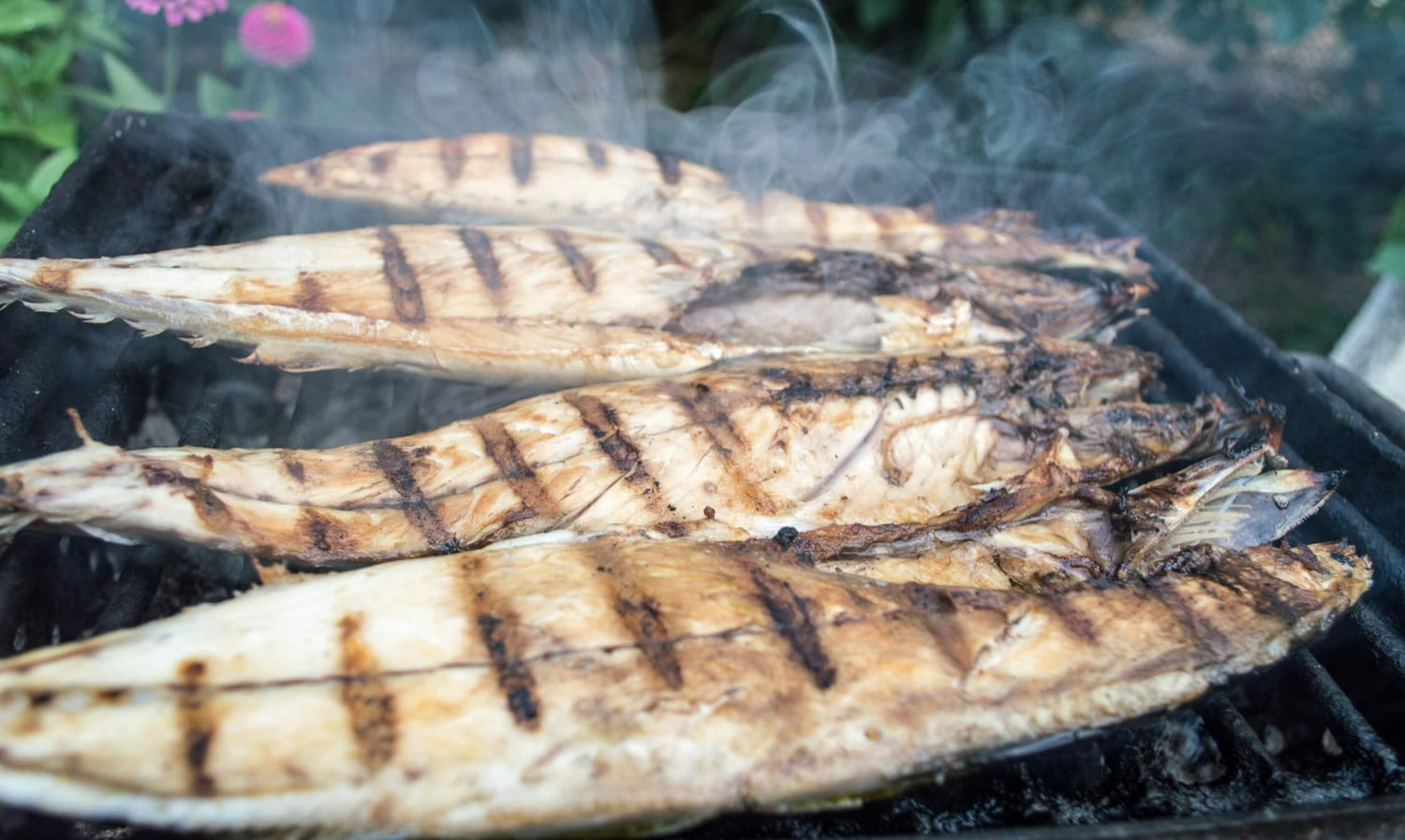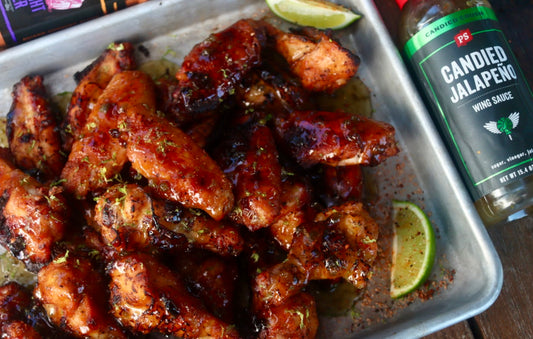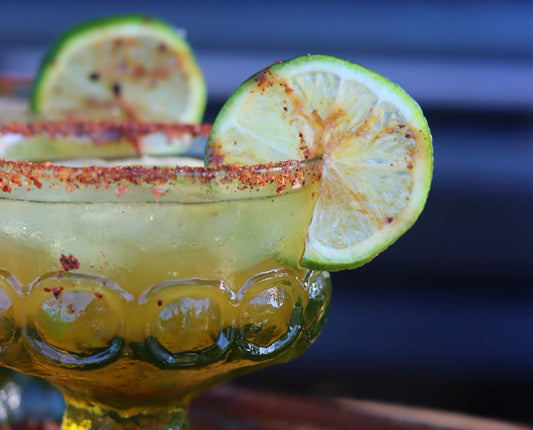Seas the Day With These 5 Essential Rules for Grilling Fish
Grilling can take any kind of meat to the next level. While steaks and burgers are foundational among grill masters, you can get tremendous flavors by putting fish on the grates.
Before you fire up the grill, knowing the right way to cook your fish is essential. Here’s how.
5 Essential Rules for Grilling Fish
Fish is typically lighter than other types of meat, with some fish containing under 3g of fat. Therefore, grilling fish requires as much attention and care as your ribeyes and porterhouses.
Use these five essential rules to get the most from your grilled fish.
1. Find Firm Fish
Your grilled fish journey starts at the supermarket or wherever you source your food. Some fish are easier to grill than others, so be mindful of which ones you select.
The best fish to grill have firm bodies because they will hold up better on the grill. These choices include salmon, tuna, mahi mahi, halibut and other suitable species. You’ll want to avoid flaky fish like cod because they might fall through the grates.
Flaky fish break easily because their tissues don’t connect as strongly as others. For example, cod have about 50 flakes with thin membranes separating each one. The thinness leads to problems like gaping, so these fish are more suitable for a frying pan.
2. Prep Your Fish and the Grill

While grill prep is essential for any meat, fish require extra attention because of their composition. Research shows fish have high moisture levels, making them more likely to stick to the grates if you don’t pat them down. Use a paper towel to dry the fish and make flipping easier. If you get the fish from the refrigerator, let the pieces come to room temperature before putting them on the grill.
When preparing your grill, prioritize cleanliness and lubrication. Clean your grill to remove any debris from previous cooking — especially if you use one at a campsite or public space. After cleaning, preheat your grill for 10-15 minutes before bringing the fish out. Then, use a wire brush to spread oil safely on the grates and lubricate them for the fish. A well-oiled grill means you’re less likely to see the fish stick.
3. Marinate the Fish
Another essential step in fish preparation is marinating your meat. Fish don’t need as much time or marinade as other meat because you don’t want to overpower it.
Start with a neutral oil like avocado or olive and add your favorite spices. Adding lemon or lime juice to the marinade brings bursts of flavor, but be careful with sugar-based ingredients. Excess sugar can burn your meat on high heat, so be conservative with your application.
4. Use Direct Heat

If you want a fast grilling session, use direct heat for your fish. Cooking over the flames is best if you want a good sear on both sides, adding flavor and aesthetics to each fish. Direct heat is also best when cooking fish with the skin on. Salmon, trout and snapper are excellent examples of fish with crispy skin once they hit the grill. You’ll practically taste bacon when you peel them off.
While direct heat is preferable, you can still use indirect heat. Grill masters use this method for pork shoulder, whole chickens and sizable pieces of meat, but it can work for large fish. For example, you may cook a whole salmon or swordfish on indirect heat if you’re concerned about the fish sticking or drying.
5. Cooking Time
Grilling fish gives you flexibility because you can use the grates for direct heat or avoid the flames for indirect heat. You can even wrap each piece in foil and roast them with vegetables for a tasty dinner.
Regardless, pay attention to cooking time because it can vary based on the fish and its size. Fish typically require about 8 to 10 minutes per inch of thickness, so a thin piece of fish may need less time on the grill.
3 Grilling Mistakes to Avoid With Fish
The thought of grilled trout or rainbowfish may be mouthwatering, but your grilling can go wrong if you’re not careful. Avoid these three crucial mistakes when grilling fish.
1. Ignoring the Internal Temperature
Internal temperature is among the most crucial factors when grilling fish, so don’t ignore it. The USDA says 145 degrees Fahrenheit is the minimum for fish, emphasizing vigilance when working the grill.
Use a meat thermometer to gauge the temperature and remove the fish when ready. Some devices take as few as two seconds to provide a reading, so take advantage of these thermometers.
2. Skipping Preparation
If you buy skinless and precut fish, you won’t need as much preparation.
However, a large piece of fish fresh from the ocean will require more labor. You must clean the fish to avoid bacteria — otherwise, you risk getting sick.
Other essential tasks include removing the scales and bones to ensure your fish is easy to grill and eat. Children or pets might have trouble eating if you don’t take the bones out.
3. Flipping Multiple Times
The sear is essential when cooking meat, so grill masters only turn their fish once. Don’t flip the meat repeatedly to check its doneness because you’ll disturb the grilling process.
Set a timer for your fish and flip it halfway through to ensure each piece gets a good sear and cooks evenly on both sides. The delicacy of fish also emphasizes the need to let it rest and flip only once.
Grilling Fish to Perfection
Fish is unique because it’s lighter and more delicate than chicken, pork or steak. However, you can still get excellent sears and tastes by grilling your fish. Use these essential rules for grilling fish to get a tasty bite each time.
Bonus Video: 7 Tips for Perfectly Grilled Fish
|
Author Bio: Oscar Collins is the editor-in-chief of Modded and the grill master of his cozy home in NYC. Follow him on Twitter @TModded for frequent updates on his work. |
 |







